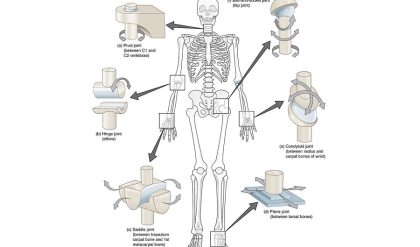What is Muscle Action?
The process of muscle contraction is central to all fitness, strength and sports training, yet there are many aspects of this apparently well-known phenomenon that are not adequately understood even at a more popular level.
For a start, even though muscles are stated to lengthen during eccentric conditions, muscles can only “contract” or “relax.” I have intentionally placed the term “contract” within parentheses, because scientists to day consider that it is far more appropriate to refer to muscle action rather than muscle contraction. One of the reasons given for this preference is that the active component of muscle , the actin-myosin system, appears to behave as a sliding filament model in which the adjacent actin and myosin muscle filaments slide in between one another. Thus, the apparent contraction or shortening of a muscle more correctly refers to an action which shortens the distance between the two attachments of the ends of a muscle group when a joint angle changes. Moreover, muscle fibers do not necessarily run all the way from the tendinous attachment on one bone to the tendinous attachment on another bone; a given muscle group may comprise muscle filaments that are in series and parallel with one another. Then, if a muscle stays activated in a situation where the joint angle remains the same (i.e., in an isometric state), there is no apparent muscle “contraction,” even though there is definitely activity taking place which keeps the actin and myosin filaments attached and pulling against one another.
So, having accepted that scientists now prefer us to refer to muscle actions, let us move on to discuss all the different types of muscle action that we talk about in the world of strength training.
Types of Muscle Action
Traditionally, the following types of muscle “contraction” beginning with the prefix “-iso” (meaning “the same”) are defined: isotonic (constant muscle tension), isometric (constant muscle length), isokinetic (constant velocity of motion) and isoinertial (constant load). In addition, movement may occur under concentric (so-called “muscle shortening”) and eccentric (so-called “muscle lengthening”) conditions. Before these terms are unquestioningly applied to exercise, it is important to examine their validity.
In all of the above cases, it is more accurate to speak about muscle contraction taking place under various movement conditions. It is well known that a muscle can only contract or relax relative to its resting or inactivated state, so that it is a misnomer to refer to eccentric muscle contraction as a “contraction” in which a muscle contracts and lengthens simultaneously, as we noted in the introduction above. Actually, this means that a muscle which has contracted under concentric or isometric conditions is simply returning under eccentric conditions to its original resting length. To avoid confusion like this, it is preferable to define muscle action as follows (where proximal refers to the “nearest” end of the muscle and “distal” to the “furthest” end):
![]() Concentric – Action in which the proximal and distal muscle attachments move towards one another
Concentric – Action in which the proximal and distal muscle attachments move towards one another
![]() Eccentric – Action in which the proximal and distal muscle attachments move away from one another
Eccentric – Action in which the proximal and distal muscle attachments move away from one another
![]() Isometric – Action in which the proximal and distal muscle attachments do not move relative to one another
Isometric – Action in which the proximal and distal muscle attachments do not move relative to one another
Isometric Muscle Action?
Isometric literally means “same length,” a state which occurs only in a relaxed muscle. Actually, it is not muscle length, but joint angle which remains constant. Contraction means “shortening,” so that isometric contraction, like all other forms of muscle contraction, involves internal movement processes which shorten the muscle fibres. Isometric contraction may be defined more accurately to mean muscle contraction which occurs when there is no external movement or change in joint angle (or distance between origin and insertion). It occurs when the force produced by a muscle exactly balances the resistance imposed upon it and no movement results. Although not incorrect, the term isometric may be replaced by the simple word static, without sacrificing any scientific rigour. It is interesting to note that, during isometric contraction, mechanical work, some of which is absorbed by the tendinous tissue, is generated by the activation of muscle fibers.
Isotonic Muscle Action?
The term isotonic, however, should be avoided under most circumstances, since it is virtually impossible for muscle tension to remain the same while joint movement occurs over any extended range. Constancy is possible only over a very small range under very slow or quasi-isometric (almost isometric) conditions of movement for a limited time (since fatigue rapidly decreases tension). Naturally, constant tone also exists when a muscle is relaxed, a state known as resting tonus. Whenever movement occurs, muscle tension increases or decreases, since acceleration or deceleration is always involved and one of the stretch reflexes may be activated. Many European and Russian scientists prefer to use the term auxotonic, which refers to muscle contraction involving changes in muscle tension and length. Other authors use the term allodynamic, from the Greek “allos” meaning “other” or “not the same.” Both terms are more accurate than isotonic in this context. Isotonic action is most likely to occur under static conditions, in which case we have isotonic isometric action. Even then, as is the case with all muscle activation, there is rise time of tension build up, an intermediate phase of maximal tension and a final decay time of tension decrease. For any prolonged action, the tension oscillates irregularly over a range of values. If the load is near maximal, the muscles are unable to sustain the same level of static muscle tension for more than a few seconds and the situation rapidly becomes anisotonic isometric. In general, the term isotonic should be reserved for the highly limited, short-movement range situations in which muscle tension definitely remains fairly constant.
Isokinetic Action?
The word isokinetic is encountered in two contexts: firstly, some textbooks regard it as a specific type of muscle contraction, and secondly, so-called isokinetic rehabilitation and testing machines (or “dynamometers”) are often used by physical therapists. The term isokinetic contraction is inappropriately applied in most cases, since it is impossible to produce a full range muscle contraction at constant velocity. To produce any movement from rest, Newton’s first two Laws of Motion reveal that acceleration must be involved, so that constant velocity cannot exist in a muscle which contracts from rest and returns to that state. Constant velocity can occur only over a part of the range of action.
Similarly, it is biomechanically impossible to design a purely isokinetic machine, since the user has to start a given limb from rest and push against the machine until it can constrain the motion to approximately constant angular velocity over part of its range. The resistance offered by these devices increases in response to increases in the force produced by the muscles, thereby limiting the velocity of movement to roughly isokinetic conditions over part of their range. They are designed in this way since some authorities maintain that strength is best developed if muscle tension is kept at a maximum at every point throughout the range, a proposition which is neither proved nor universally accepted with reference to all types of strength. Moreover, research has shown that torque (and force) produced under isokinetic conditions is usually much lower than that produced isometrically at the same joint angle. In other words, it is impossible to use isokinetic machines to develop maximal strength throughout the range of joint movement.
The presence of any acceleration or deceleration always reveals the absence of full range constant velocity. Isokinetic machines should more accurately be referred to as quasi-isokinetic (or pseudoisokinetic) machines. One of the few occasions when isokinetic action takes place is during isometric contraction. In this case, the velocity of limb movement is constant and equal to zero. However, even if a machine manages to constrain an external movement to take place at constant velocity, the underlying muscle contraction is not occurring at constant velocity.
Concentric and Eccentric Muscle Action
Two remaining terms applied to dynamic muscle action need elaboration. Concentric contraction refers to muscle action which produces a force to overcome the load being acted upon. For this reason, Russian scientists call it overcoming contraction. The work done during concentric contraction is referred to as positive. Eccentric contraction refers to muscle action in which the muscle force yields to the imposed load. Thus, in Russia, it is referred to as yielding or succumbing contraction. The work done during eccentric contraction is often called negative.
Concentric contraction occurs, for example, during the upward thrust in the bench press or squat, while eccentric contraction occurs during the downward phase. Apparently, more post-exercise soreness (DOMS – Delayed Onset Muscle Soreness) is produced by eccentric contraction than the other types of muscle contraction. However, it should be noted that adaptation processes minimize the occurrence of DOMS in the musculoskeletal systems of well-conditioned athletes. Microtrauma in connective tissue may play a role in the DOMS phenomenon, but the relationship between the intensity and volume of eccentric muscle activity, biochemical changes, the influence of adaptation processes and the extent of DOMS is still poorly understood.
A little appreciated fact concerning eccentric muscle contraction is that the muscle tension over any full range movement (from starting position through a full cycle back to the starting position) is lower during the eccentric phase than the isometric or concentric phases, yet eccentric activity is generally identified as being the major cause of muscle soreness. Certainly, muscle tension of 30 to 40 percent greater than concentric or isometric contraction can be produced by maximal eccentric muscle contraction, as when an athlete lowers a supramaximal load in a squat or bench press (but can never raise the same load), but this degree of tension is not produced during the eccentric phase of normal sporting movements. Since maximal eccentric strength can strictly be determined only if we take the muscle to total failure, we can immediately see why it can be very misleading and inaccurate to refer to maximum eccentric strength – nobody has yet measured it in an athlete tested to the point of muscle rupture! Clearly, it would be foolhardy to assume that our current understanding of all aspects of muscle contraction is adequate for offering optimal physical conditioning or rehabilitation.
Very Slow Muscle Action
Since any resistance training with heavy loads constrains the athlete to move very slowly, it is relevant to define slow, dynamic isometric action as quasi-isometric (some trainers have chosen in recent years to popularize this sort of training by calling it “superslow” training, but they display little knowledge about the biomechanics of this process to be able to understand it adequately). Recognition of this discrete type of activity is necessary, because the force-velocity curves at nearmaximal loads deviate significantly from the hyperbolic (tilted “C-shaped” curve) relationship displayed at higher velocities.
Unlike isometric activity which occurs at a fixed joint angle, quasi-isometric activity may be executed over much of the full range of movement. Therefore, its training effects, unlike those of true isometrics, are not produced predominantly close to a specific joint angle. This quasi-isometric activity may be executed in either the concentric or the eccentric mode (concentric quasi-isometrics and eccentric quasi-isometrics) and is highly relevant to training for maximal strength, muscle hypertrophy and active flexibility, rather than maximal power or speed.
One does not necessarily have to try to produce quasi-isometric activity; it is a natural consequence of all training against near-maximal resistance and it takes place with most bodybuilding and powerlifting exercises, provided the lifter avoids any tendency to allow the load to drop rapidly and involve the use of momentum or elastic rebound.
Conclusion
The different types of muscle action/contraction may be summarized as in Figure 1.

Figure 1. The different types of muscle action under various movement conditions.
A concluding comment is necessary about all the types of muscle contraction. A careful distinction has to be made between the characteristics of the machine or device against which the athlete is working, the external actions produced by muscle contraction and the internal muscular processes. A device may well be designed which constrains its torque or the force in its cables (of transmission system) to remain constant over most of its range, but this does not mean that the force or torque produced about a joint by a given muscle group remains the same when working against this machine.
In this respect, it is essential to distinguish clearly between force and torque, since a muscle may produce constant torque about a joint over a certain range, but the force or muscle tension causing the action may vary considerably. Conversely, relatively constant muscle force or tension may produce significantly changing torque. This is because torque is the vector product of the force and the perpendicular distance from line of action of the force to the fulcrum about which it acts. So, if either the force or the distance changes, there will be a change of torque.



